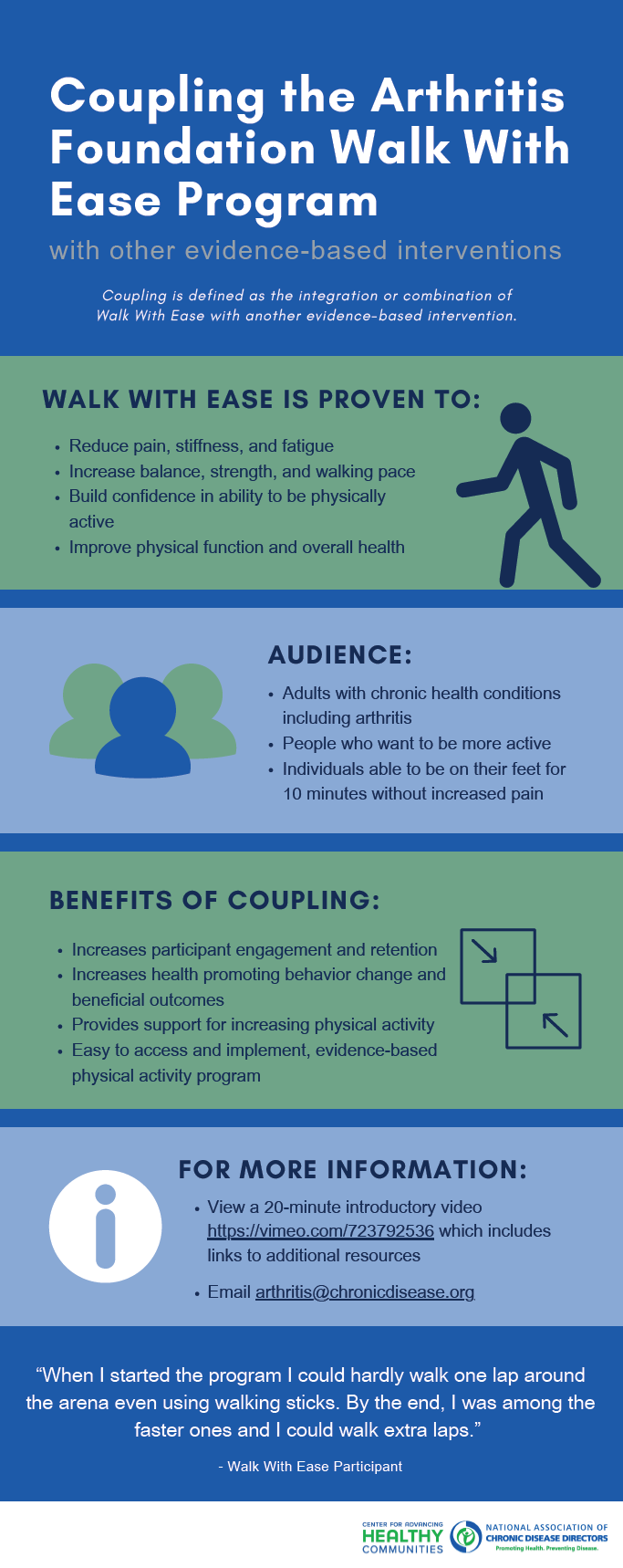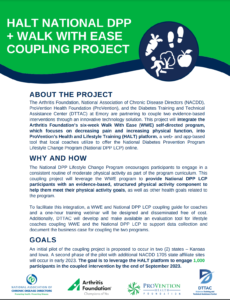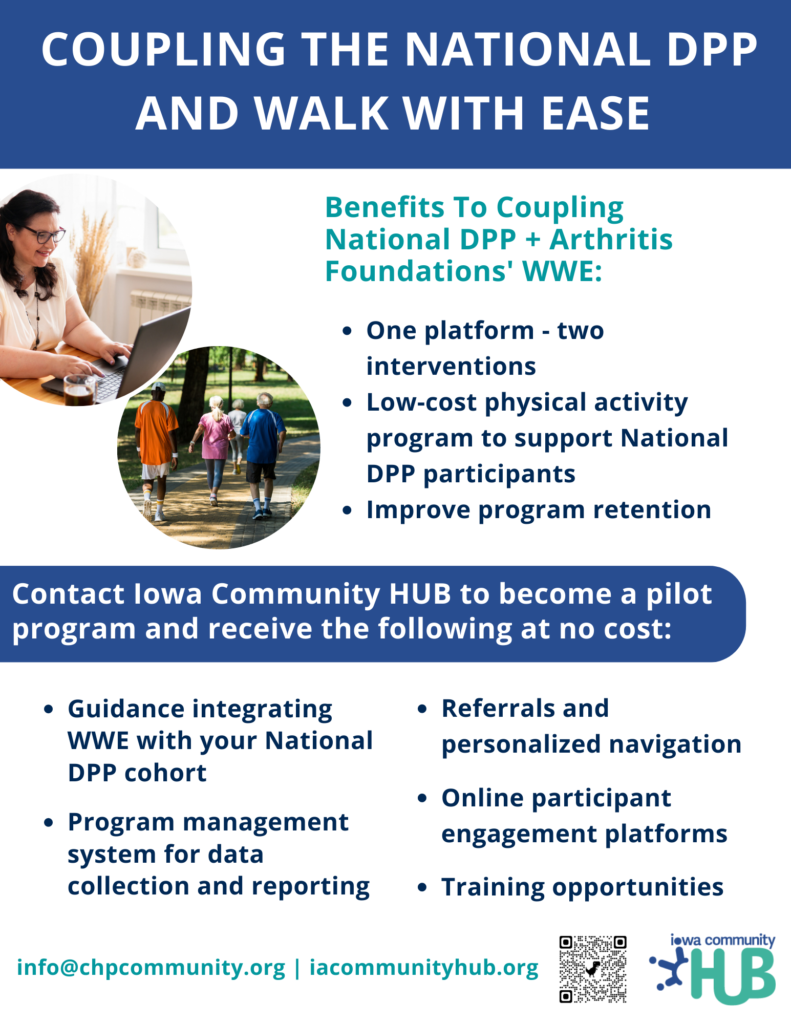
Coupling the National Diabetes Prevention Program and Walk With Ease
It has been approximately 20 years since the National Diabetes Prevention Program (National DPP) Lifestyle Change Program (LCP) (National DPP, 2002) and the Arthritis Foundation’s Walk with Ease program (WWE, 1999) were initially tested and scaled. Today, the National DPP has close to 2,000 delivery organizations across the U.S. registered in the CDC Diabetes Prevention Recognition Program (DPRP). The primary goal of the National DPP LCP is to delay the onset of Type 2 diabetes through weight loss by improving nutrition and physical activity levels. The WWE program was first developed to help those with arthritis decrease pain and increase physical functioning; it has since been used to provide a structure for all adults who desire to increase their physical activity. Today, WWE has over 5,000 certified leaders.
While people with diabetes who also have arthritis are more commonly inactive, they can experience many benefits from participating in physical activity such as lower blood glucose levels, lower blood pressure, better weight control, and improved mood.
Why “Couple”? The National DPP LCP encourages participants to engage in a consistent routine of moderate physical activity; however, there is no structured physical activity opportunity provided in the program curriculum. Utilizing WWE to provide National DPP LCP participants with an evidence-based, structured physical activity component can help participants meet their physical activity goals along with other health goals associated with the National DPP LCP. Based on a formative evaluation conducted around coupling, there appear to be a number of potential benefits from offering WWE with the National DPP LCP.
The prevalence of arthritis among individuals with diabetes is significantly higher compared to those without diabetes.
The National Association of Chronic Disease Directors (NACDD) and Emory University’s Diabetes Training and Technical Assistance Center (DTTAC) are working to better understand how organizations offer the National DPP LCP and WWE at the same time (coupling). An implementation and evaluation guide provides users with more information around implementation options and strategies, evaluation guidance, and data collection tools to assess outcomes of the coupled programs.
The coupling guide can be requested and used by anyone interested in coupling the National DPP LCP and WWE.
NACDD, the Arthritis Foundation, ProVention Health Foundation, and DTTAC are partnering to couple two evidence-based interventions through an innovative technology solution.
This pilot project will integrate the Arthritis Foundation’s six-week WWE self-directed program, which focuses on decreasing pain and increasing physical function, into ProVention’s Health and Lifestyle Training (HALT) platform, a web- and app-based tool that local coaches utilize to offer the National DPP LCP virtually.
This project will leverage the WWE program to provide National DPP LCP participants with an evidence-based, structured physical activity component to help them meet their physical activity goals, as well as other health goals related to the program. A checklist was created to assist health coaches using the HALT platform to couple the two programs.
NACDD and partners are piloting the integration of the WWE into the HALT platform in Kansas and Iowa, with plans to expand to additional states in the future.
Diabetes can impact the progression and severity of arthritis.
For additional information, contact arthritis@chronicdisease.org.
For more information about the complete arthritis portfolio, please visit https://actiononarthritis.chronicdisease.org/. This project is supported by Cooperative Agreements No. 5NU58DP006261004-00 and 6NU38OT000286-03-05 funded by the Centers for Disease Control and Prevention of the U.S. Department of Health and Human Services (HHS) as part of a financial assistance award totaling $166,550 with 100 percent funded by CDC/HHS. The contents are those of the author and do not necessarily represent the official views of, nor an endorsement, by CDC/HHS, or the U.S.







